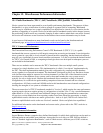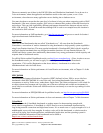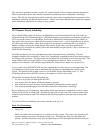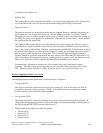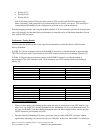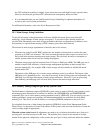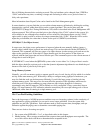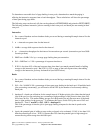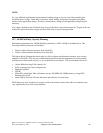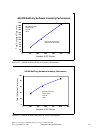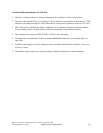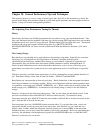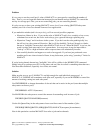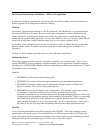To determine a reasonable level of page faulting in user pools, determine how much the paging is
affecting the interactive response time or batch throughput. These calculations will show the percentage
of time spent doing page faults.
The following steps can be used: (all data can be gathered w/STRPFRMON and printed w/PRTSYSRPT).
The following assumes interactive jobs are running in their own pool, and batch jobs are running in their
own pool.
Interactive:
1. flts = sum of database and non-database faults per second during a meaningful sample interval for the
interactive pool.
2. rt = interactive response time for that interval.
3. diskRt = average disk response time for that interval.
4. tp = interactive throughput for that interval in transactions per second. (transactions per hour/3600
seconds per hour)
5. fltRtTran = diskRt * flts / tp = average page faulting time per transaction.
6. flt% = fltRtTran / rt * 100 = percentage of response time due to
7. If flt% is less than 10% of the total response time, then there's not much potential benefit of adding
storage to this interactive pool. But if flt% is 25% or more of the total response time, then adding
storage to the interactive pool may be beneficial (see NOTE below).
Batch:
1. flts = sum of database and non-database faults per second during a meaningful sample interval for the
batch pool.
2. flt% = flts * diskRt X 100 = percentage of time spent page faulting in the batch pool. If multiple batch
jobs are running concurrently, you will need to divide flt% by the number of concurrently running
batch jobs.
3. batchcpu% = batch cpu utilization for the sample interval. If higher priority jobs (other than the batch
jobs in the pool you are analyzing) are consuming a high percentage of the processor time, then flt%
will always be low. This means adding storage won't help much, but only because most of the batch
time is spent waiting for the processor. To eliminate this factor, divide flt% by the sum of flt% and
batchcpu%. That is: newflt% = flt% / (flt% + batchcpu%)
This is the percentage of time the job is spent page faulting compared to the time it spends at the
processor.
4. Again, the potential gain of adding storage to the pool needs to be evaluated. If flt% is less than 10%,
then the potential gain is low. If flt% is greater than 25% then the potential gain is high enough to
warrant moving main storage into this batch pool.
IBM i 6.1 Performance Capabilities Reference - January/April/October 2008
© Copyright IBM Corp. 2008 Chapter 19 - Misc Perf Information 309



